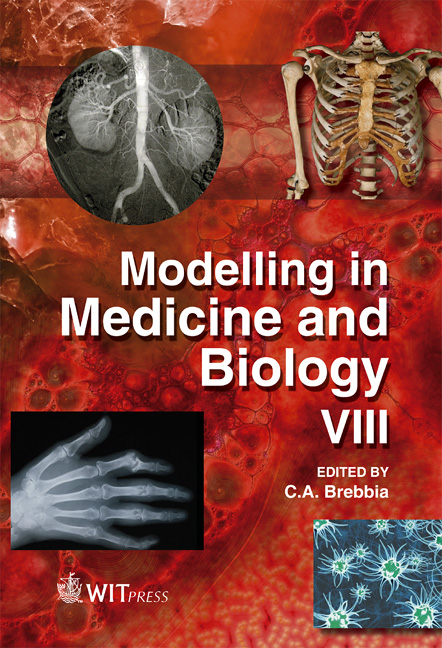Numerical Simulations Of High Frequency Respiratory Flows In A Model Bifurcating Lung Geometry
Price
Free (open access)
Transaction
Volume
13
Pages
8
Page Range
115 - 122
Published
2009
Size
640 kb
Paper DOI
10.2495/BIO090111
Copyright
WIT Press
Author(s)
N. Valleru, S. Smirnov, J. Tan, S. Parameswaran & R. Raj
Abstract
Numerical studies of 2D cases are conducted using a CFD code FLUENT to analyze the flow patterns and gas transport at high oscillatory frequencies through a two-generation bifurcating lung model. The geometry corresponds to fifth to seventh generations of airways with the dimensions based on the Wiebel’s symmetric pulmonary model. Computations are carried out for the Reynolds numbers Re = 400 and Re = 1000, while the Womersley number is Wo = 4.0 and Wo = 16.0. The average mass distribution in the entire lung model is also investigated to analyze the influence of flow frequency on the mass diffusion efficiency. The numerical results of the current study pointed to: i) the numerical model successfully reproduces many results observed in the experiments; and ii) there is practically no net effect of the high frequency on the increased mass diffusion in the bifurcation geometry. The developed numerical model may be further used in more complicated 3D geometries and for determining the optimal conditions for artificial lung ventilation. Keywords: pulmonary airways, oscillatory flow, diffusion, numerical simulation, CFD, fluid mechanics.
Keywords
pulmonary airways, oscillatory flow, diffusion, numerical simulation, CFD, fluid mechanics.





